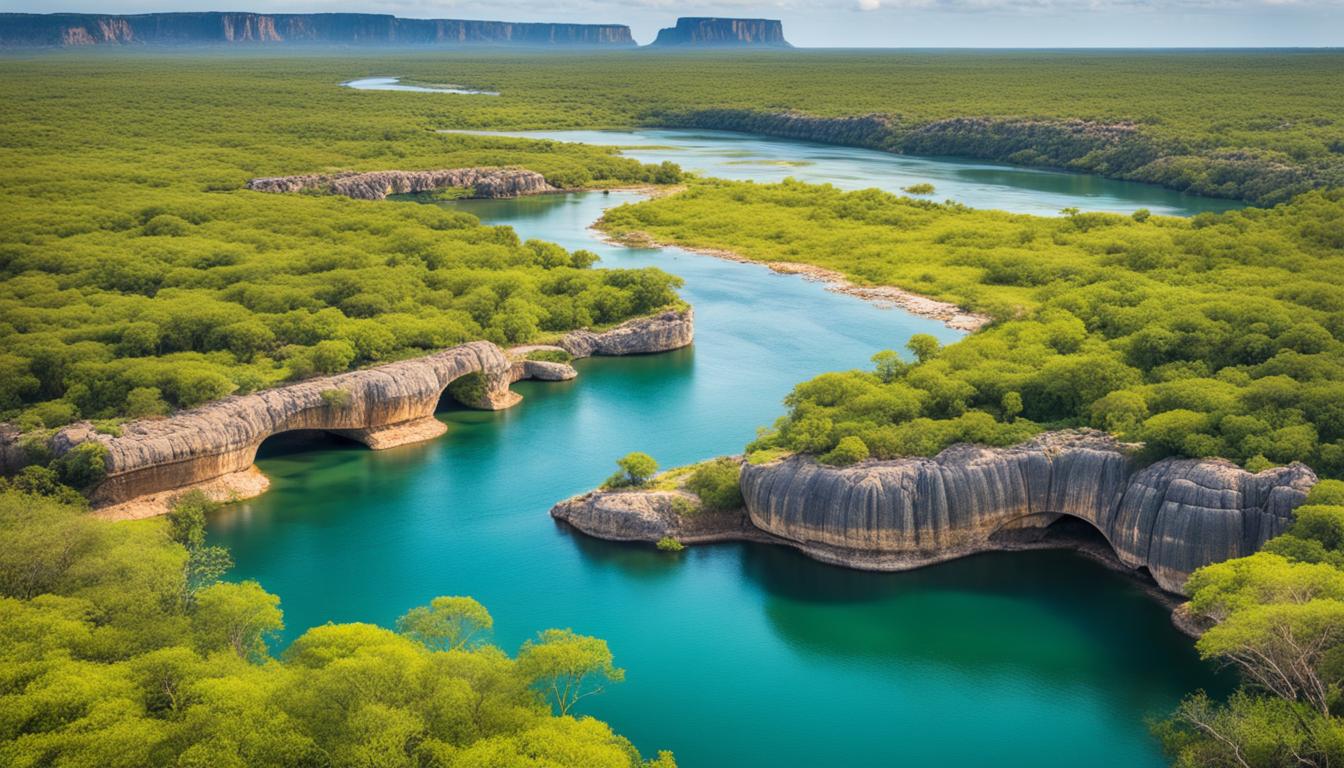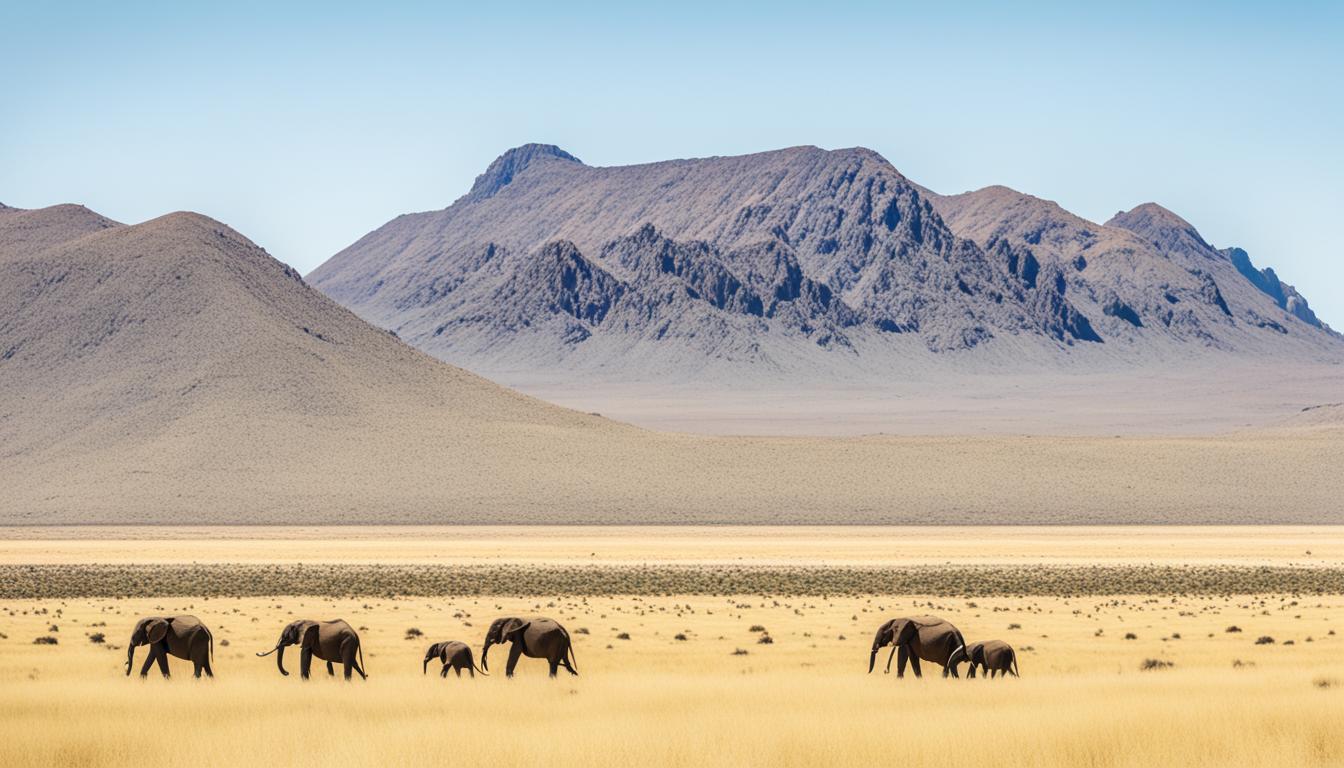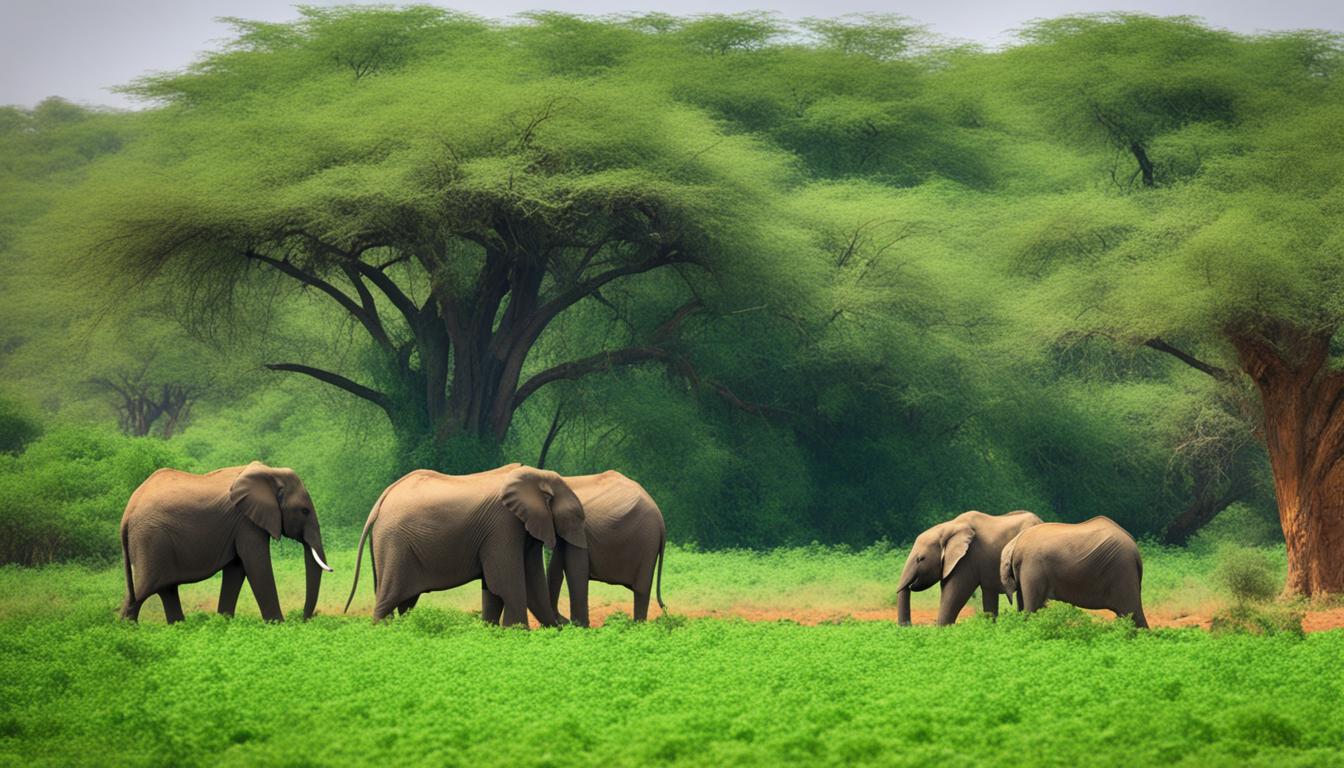Myanmar (formerly Burma) Sacred Natural Sites and Biodiversity
In Myanmar, formerly known as Burma, the sacred natural sites hold a surprising fact – they are home to over 9,000 species of plants, more than 1,000 species of birds, and around 300 species of mammals. This incredible biodiversity is deeply intertwined with the cultural heritage and traditional knowledge of the indigenous communities in the region. Conservation and preservation of these sacred sites are crucial to protect the ecological significance and ensure sustainable practices for biodiversity conservation and ecosystem protection.
Key Takeaways:
- Myanmar’s sacred natural sites are home to a vast diversity of plant and animal species.
- These sites are deeply rooted in the cultural heritage and traditional knowledge of indigenous communities.
- Conservation efforts are essential to protect the ecological significance of these sites.
- Sustainable practices are crucial for biodiversity conservation and ecosystem protection.
- Preserving these sacred sites safeguards Myanmar’s cultural heritage and ensures the survival of unique ecosystems for future generations.
Kakku: A Remarkable Sacred Natural Site in Myanmar.
Kakku, located in the Shan state of Myanmar, is an awe-inspiring sacred natural site that exemplifies the country’s rich cultural heritage and Buddhist significance. This remarkable site is adorned with over 2,478 pagodas and an abundance of sacred Bodhi trees, creating a tranquil and spiritual atmosphere.
The origins of Kakku can be traced back to ancient times, with local legends suggesting that it was initially created as a resting point for weary river travelers and later evolved into a shrine for the passage of the dead. This historical and religious significance makes Kakku a site of immense reverence for the people of Myanmar.
Unfortunately, Kakku is facing threats from tourism and various human activities. The influx of tourists, while beneficial to the local economy, can impose strain on the delicate ecosystem and disrupt the site’s cultural integrity. Additionally, activities such as vandalism and improper waste disposal pose risks to the preservation of this sacred natural site.
“Kakku is a testament to Myanmar’s rich cultural heritage and Buddhist tradition. It is our duty to protect this sacred site and safeguard its biodiversity for future generations.” – Local community member
Conservation efforts are crucial to mitigate these threats and preserve the cultural heritage and biodiversity of Kakku. By implementing sustainable practices and engaging local communities, we can ensure the long-term protection of this remarkable site.
Biodiversity and Conservation at Kakku
The biodiversity of Kakku adds another layer of significance to its cultural heritage. The site is home to a diverse range of plant species, including endemic and rare plants that contribute to the ecological balance of the region. The conservation of Kakku’s biodiversity is vital to maintain the natural harmony and preserve the unique ecosystem that has evolved over centuries.
| Biodiversity at Kakku | Conservation Efforts |
|---|---|
| 1. Rich variety of flora | 1. Implementation of sustainable tourism practices |
| 2. Sacred Bodhi trees | 2. Education and awareness programs for visitors |
| 3. Potential habitat for rare species | 3. Collaborative efforts with local communities |
| 4. Ecosystem services | 4. Restoration and preservation techniques |
Conservation initiatives at Kakku aim to strike a balance between preserving its cultural heritage and promoting sustainable tourism. By fostering partnerships between local communities, governmental organizations, and conservation experts, we can ensure a comprehensive and effective approach to the protection of this sacred natural site.
Kakku stands as a testament to the fusion of cultural and ecological significance. By valuing and conserving this remarkable site, we can promote cultural heritage, Buddhist values, and biodiversity conservation in Myanmar for generations to come.
Threats to Biodiversity in Myanmar’s Sacred Natural Sites.
The biodiversity in Myanmar’s sacred natural sites, including Kakku, faces several threats. These threats pose a significant challenge to the conservation of biodiversity and the preservation of these sacred sites.
- Hunting and poaching: Unregulated hunting and poaching activities disrupt the delicate balance of ecosystems in sacred natural sites, leading to the decline of various species and the disruption of natural biodiversity.
- Habitat loss due to agricultural practices: The expansion of agricultural activities in and around sacred natural sites often results in the destruction and fragmentation of essential habitats, leading to the displacement of native flora and fauna.
- Shifts in cultivation methods: Changes in traditional cultivation practices, such as the introduction of modern techniques and the increased use of chemical fertilizers and pesticides, can have detrimental effects on the biodiversity of sacred natural sites.
- Destructive fishing techniques: Inadequate fishing practices, including the use of dynamite or poison, can harm aquatic ecosystems and lead to the depletion of fish populations, disrupting the delicate balance of biodiversity in sacred sites.
- Introduction of invasive species: The introduction of non-native species into sacred natural sites can pose a severe threat to indigenous flora and fauna, outcompeting native species and altering natural ecosystems.
- Weak law enforcement: Limited enforcement of laws and regulations pertaining to wildlife trade, hunting, and poaching undermines conservation efforts and exacerbates the threats faced by biodiversity in sacred natural sites.
These activities have detrimental effects on the local flora and fauna and contribute to the loss of biodiversity in Myanmar’s sacred natural sites. Effectively addressing these threats is essential to ensure the long-term preservation of these sites and the protection of their invaluable ecological and cultural heritage.
| Threats | Description |
|---|---|
| Hunting and poaching | Unregulated hunting and poaching activities disrupt the delicate balance of ecosystems |
| Habitat loss due to agricultural practices | The expansion of agricultural activities in and around sacred natural sites leads to the destruction and fragmentation of essential habitats |
| Shifts in cultivation methods | Changes in traditional cultivation practices harm the biodiversity of sacred natural sites |
| Destructive fishing techniques | Inadequate fishing practices harm aquatic ecosystems and deplete fish populations |
| Introduction of invasive species | Non-native species outcompete and disrupt native flora and fauna |
| Weak law enforcement | Limited enforcement undermines conservation efforts |
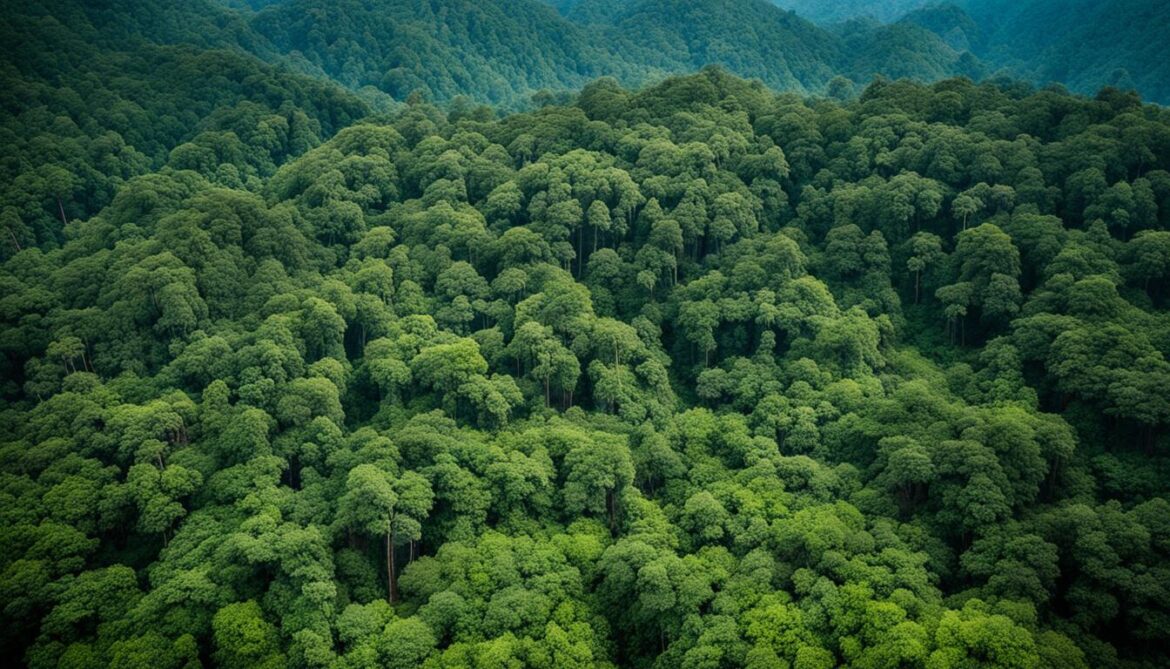
The Vision for Conservation of Myanmar’s Sacred Natural Sites.
When it comes to the conservation of sacred natural sites in Myanmar, there is a clash of visions between the World Heritage system and the local indigenous communities. The national-level registration and documentation of these sites often adopt globalizing notions that overlook the evolving local values and dynamic conceptions. This raises important questions about who has the authority to determine the meaning and significance of a sacred natural site.
It is imperative to adopt an inclusive approach that respects the cultural values of the indigenous communities. By involving the communities in the decision-making process, their traditional knowledge and cultural practices can be integrated into the conservation efforts. This inclusive approach ensures that the conservation strategies align with the cultural values and aspirations of the indigenous communities.
Conservation initiatives must recognize that sacred natural sites hold deep cultural and spiritual significance for the local indigenous communities. These sites are not only ecologically important but also play a vital role in the preservation of cultural heritage. By valuing and protecting these sites, we safeguard the traditions and customs that have been passed down through generations.
“We believe that the conservation of sacred natural sites should be guided by the wisdom of the indigenous communities, who have lived in harmony with nature for centuries. Their cultural values and traditional practices are essential for the long-term preservation of these sites.” – A local community leader.
By combining scientific knowledge with indigenous wisdom, we can create a holistic approach to conservation that promotes sustainability and preserves the unique biodiversity found in Myanmar’s sacred natural sites. This collaboration ensures that the conservation efforts are comprehensive and consider the intricate relationship between nature and culture.
In essence, the vision for the conservation of Myanmar’s sacred natural sites lies in adopting an inclusive approach that respects the cultural values of the indigenous communities while also embracing scientific knowledge. By doing so, we can safeguard the ecological integrity, cultural heritage, and spiritual significance of these sites for future generations.
A Comparison of Conservation Approaches
| Approach | World Heritage System | Inclusive Approach |
|---|---|---|
| Recognition of Cultural Values | Limited | Emphasized |
| Indigenous Participation | Minimal | Integral |
| Conservation Strategies | Standardized | Customized |
| Preservation of Traditional Knowledge | Overlooked | Valued |

Conservation Efforts and Management of Myanmar’s Sacred Natural Sites.
The conservation efforts and management of Myanmar’s sacred natural sites are primarily carried out by the local indigenous communities through the gawbaka committee. This committee plays a vital role in ensuring the preservation of these sites, which hold immense cultural and religious significance.
The gawbaka committee follows regular management approaches, considering the unique site conditions, conservation policies, and the cultural heritage associated with the sacred natural sites. Their efforts aim to protect and sustain the biodiversity within these sites for future generations.
The conservation of Myanmar’s sacred natural sites is a collaborative effort, involving the indigenous communities as active participants and custodians of these culturally significant and ecologically rich areas.
The jurisdiction of the gawbaka committee is often based on an informal arrangement between the national and state governments. This arrangement highlights the need for policy and law reforms to formalize and strengthen the role of the gawbaka committee in the conservation and management of Myanmar’s sacred natural sites.
Policy and law reforms can provide a clearer framework for empowering indigenous communities and ensuring effective conservation efforts. Such reforms would recognize the traditional knowledge and practices of these communities, allowing for a more inclusive and sustainable approach to managing these sacred natural sites.
Community-Led Conservation
Indigenous communities, with their deep connection to the sacred natural sites, possess valuable knowledge and insights into their management and conservation. Empowering these communities and integrating their perspectives in decision-making processes would strengthen the overall conservation efforts.
By actively involving indigenous communities in the management of sacred natural sites, there is a greater chance of success in preserving the biodiversity, protecting cultural heritage, and fostering sustainable practices.
Collaborative Partnerships
Collaborative partnerships between government agencies, non-governmental organizations, and local communities are crucial for implementing effective conservation strategies. These partnerships can facilitate the exchange of ideas, resources, and expertise, leading to better-informed decision-making and improved conservation outcomes.
“Collaborative partnerships between stakeholders are essential for the successful conservation and management of Myanmar’s sacred natural sites. By working together, we can protect these culturally significant areas and ensure their long-term sustainability for future generations.” – [Insert Name], Conservation Expert
Through collaborative efforts, the conservation and management of Myanmar’s sacred natural sites can be strengthened, benefiting both the indigenous communities and the wider ecosystem.
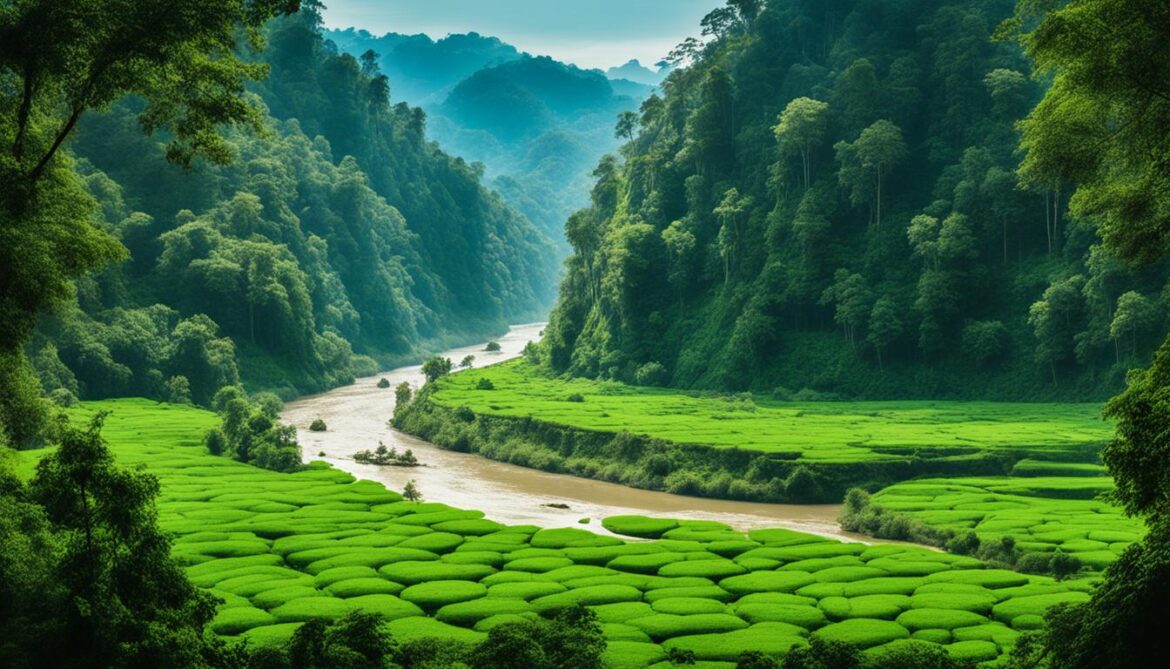
The Role of Protected Areas in Biodiversity Conservation in Myanmar.
Protected areas play a crucial role in biodiversity conservation in Myanmar. These areas serve as important habitats for diverse wildlife and flora. They provide a safe haven for endangered species and contribute to the overall health and functioning of the ecosystem.
Myanmar’s protected areas, including sacred natural sites, are essential for preserving the rich biodiversity found in the country. These areas support a wide range of wildlife, from majestic elephants and tigers to delicate butterflies and birds. The diverse flora within protected areas also adds to the overall ecological balance and resilience.

Efforts have been made to establish and manage protected areas, ensuring the long-term survival of Myanmar’s unique ecosystems. These areas are carefully monitored and protected from various threats, including habitat loss, poaching, and invasive species.
Conservation initiatives within protected areas focus not only on preserving the biodiversity but also on promoting sustainable practices. Local communities, conservation organizations, and government agencies work together to develop and implement management plans that safeguard the integrity of these areas while providing sustainable benefits to the local communities.
By maintaining the ecological balance and protecting the habitats within protected areas, Myanmar can safeguard its precious biodiversity for future generations to enjoy. These areas not only serve as havens for wildlife but also provide opportunities for research, education, and eco-tourism, generating income and raising awareness about the importance of biodiversity conservation.
It is crucial to continue supporting and expanding protected areas in Myanmar to ensure the preservation of its unique ecosystems, wildlife, and flora. Through collective efforts and sustainable practices, we can secure the future of Myanmar’s biodiversity and contribute to the global conservation of our planet’s natural heritage.
Community Participation in the Conservation of Sacred Natural Sites in Myanmar.
Community participation plays a vital role in the successful conservation of sacred natural sites in Myanmar. The local communities, particularly the Pa’oh people in Kakku, actively contribute to the management and protection of these sites. Their deep-rooted traditional practices and rich local knowledge, passed down through generations, are essential in driving sustainable conservation efforts. By engaging with the local communities and respecting their cultural values, Myanmar can ensure the long-term preservation of its sacred natural sites while fostering a sense of ownership and stewardship among the people.
The Importance of Local Knowledge and Traditional Practices
The conservation of sacred natural sites in Myanmar greatly benefits from the involvement of local communities. The Pa’oh people, for instance, possess a profound understanding of the ecological significance of these sites, acquired through years of observing nature and practicing sustainable traditions. Their intimate knowledge of the local flora and fauna, coupled with their traditional practices, empowers them to contribute effectively to conservation efforts. By respecting and integrating their traditional wisdom into management plans, Myanmar can tap into the invaluable expertise that the local communities possess.
Creating a Sense of Ownership and Stewardship
Engaging local communities in the conservation of sacred natural sites fosters a sense of ownership and stewardship among the people. By actively involving them in decision-making processes, Myanmar acknowledges the significance of their cultural values and strengthens their commitment to protecting these sites. This collaborative approach ensures that the conservation initiatives align with local aspirations and priorities, leading to a more sustainable and inclusive conservation model. Moreover, when communities feel a sense of ownership, they become natural guardians, dedicated to preserving their sacred natural heritage for future generations.
Empowering Local Communities for Sustainable Conservation
Empowering local communities through capacity-building initiatives further strengthens their role in the conservation of sacred natural sites. By providing educational and training opportunities, Myanmar can equip the community members with the necessary skills and knowledge to actively participate in conservation activities. This empowerment not only enhances their ability to contribute effectively but also generates economic and social benefits for the communities. It creates a win-win scenario where sustainable conservation practices bring positive change to the lives of the local people, fostering a strong sense of pride and motivation.
Community participation is the cornerstone of successful conservation efforts in Myanmar’s sacred natural sites. By recognizing and harnessing the local knowledge and traditional practices, and empowering the communities, Myanmar can preserve its rich cultural and ecological heritage for generations to come.
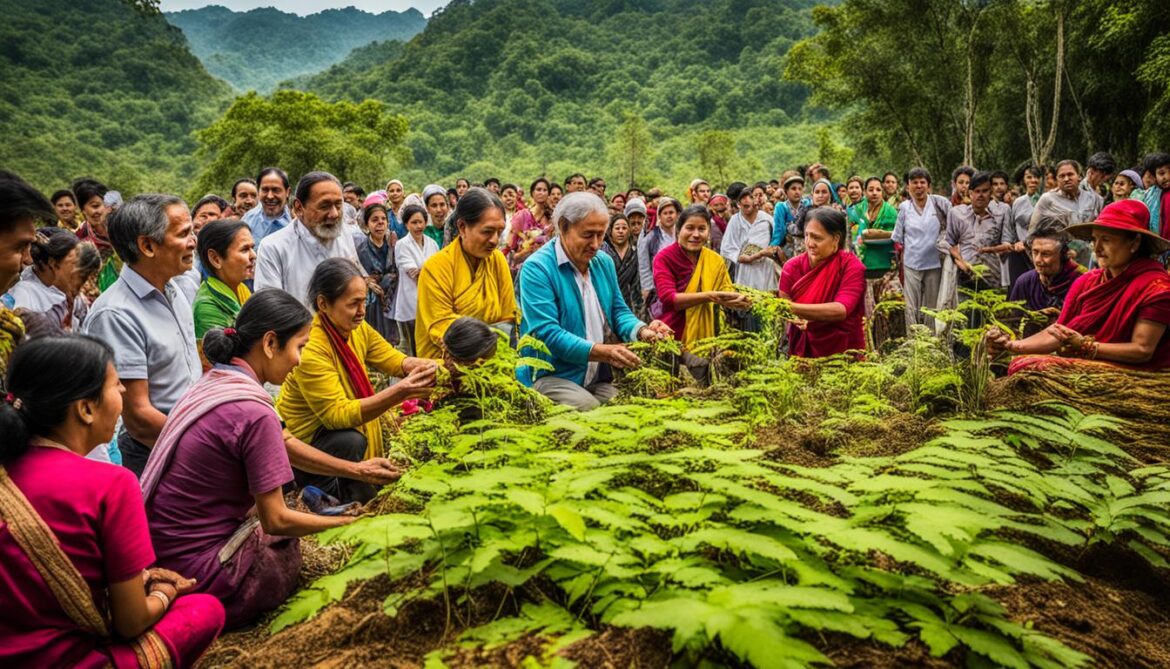
Through community participation, Myanmar can create a truly sustainable conservation model that integrates the wisdom of the past with the demands of the present. By valuing and respecting the contributions of local communities, Myanmar can ensure the long-term preservation of its sacred natural sites while honoring its cultural heritage and promoting ecological harmony.
Sustainable Tourism and Economic Development in Myanmar’s Sacred Natural Sites.
Sustainable tourism presents a unique opportunity for promoting economic development in Myanmar while ensuring the preservation of its sacred natural sites. By adopting responsible tourism practices, the country can generate income for local communities, support conservation efforts, and raise awareness about the cultural heritage and ecological significance of these sites.
One of the key benefits of sustainable tourism is its potential to provide community benefits. When tourists visit sacred natural sites, they contribute to the local economy by engaging in activities such as accommodation, dining, and purchasing local products. This influx of tourism revenue can help improve infrastructure, healthcare, and educational facilities, ultimately uplifting the livelihoods of the local communities.
“Sustainable tourism has the power to empower local communities and promote economic growth while ensuring the long-term preservation of Myanmar’s sacred natural sites,” says Dr. Aung Kyaw Myint, an expert in sustainable development.
Furthermore, sustainable tourism practices prioritize environmental conservation and minimize negative impacts on sacred natural sites. This includes implementing measures to reduce waste, conserve water, and respect the delicate ecosystems found within these areas. Through responsible tourism, Myanmar can balance economic progress with the protection of its natural heritage.
Promoting Community Engagement and Awareness
A crucial aspect of sustainable tourism in sacred natural sites is promoting community engagement and awareness. When local communities are involved in decision-making processes and benefit directly from tourism activities, they become active stakeholders in protecting these sites.
Education and awareness programs that highlight the cultural importance and ecological value of sacred natural sites can also play a significant role. By promoting understanding and appreciation among tourists, Myanmar can foster respect for the local customs, traditions, and natural resources of these sites.
The Role of Collaboration and Partnerships
Collaboration between government bodies, local communities, tourism operators, and conservation organizations is key to the success of sustainable tourism in Myanmar’s sacred natural sites. These partnerships can help establish guidelines and regulations for responsible tourism practices, ensuring that the economic benefits of tourism are distributed equitably and that conservation efforts are effectively implemented.
“Through collaborative efforts, we can strike a balance between economic development and the preservation of sacred natural sites in Myanmar. It is essential to work together to establish sustainable tourism practices that benefit both the local communities and the environment,” emphasizes Dr. Khin Thida Myint, a renowned conservationist.
Benefits Beyond Economic Development
The benefits of sustainable tourism in sacred natural sites extend beyond economic development. By promoting responsible travel, Myanmar can also showcase its unique cultural heritage and ecological diversity to the world. This exposure can attract more visitors who are seeking authentic and meaningful travel experiences, contributing further to the economic growth of the country.
Sustainable tourism provides an opportunity for Myanmar to preserve its sacred natural sites for future generations while embracing the economic potential of these destinations. By adopting responsible practices, engaging local communities, and fostering collaboration, Myanmar can create a sustainable tourism sector that balances economic development, community benefits, and environmental conservation.

Image: The image above showcases the beauty and serenity of Myanmar’s sacred natural sites, exemplifying the potential for sustainable tourism to promote economic development while preserving these valuable natural and cultural assets.
Conclusion
Myanmar’s sacred natural sites are treasures of both biodiversity and cultural heritage. These sites not only showcase the remarkable ecological diversity found in Myanmar (formerly Burma) but also hold deep spiritual and cultural significance for the indigenous communities. Conservation efforts are paramount to protect the biodiversity of these sites, preserve traditional knowledge, and promote sustainable practices.
Engaging the indigenous communities in the conservation process is crucial. By respecting their traditional practices and incorporating their wisdom, we can ensure that the management of these sacred natural sites is inclusive and sustainable. In doing so, we can safeguard the cultural heritage of Myanmar’s indigenous communities and maintain the delicate balance between nature and human existence.
Promoting responsible and sustainable tourism is another vital aspect to consider. By adopting responsible tourism practices, we can raise awareness about the importance of these sacred natural sites, while also generating economic opportunities for the local communities. This creates a win-win situation, allowing visitors to appreciate the cultural and ecological wonders of Myanmar’s sacred natural sites while supporting conservation efforts and benefiting the local communities.
Through the collective efforts of conservationists, indigenous communities, and responsible tourists, we can ensure the long-term preservation of Myanmar’s sacred natural sites. By protecting these sites, we not only conserve biodiversity but also safeguard the invaluable cultural heritage that has been passed down through generations. Let us come together to cherish and protect these precious natural and cultural treasures for future generations.




